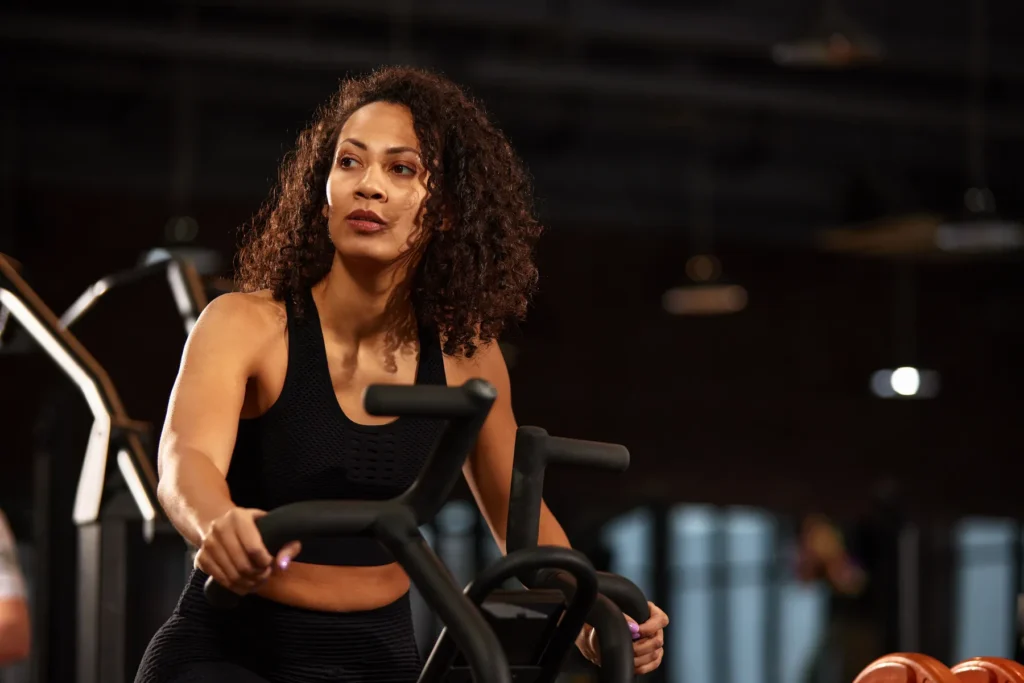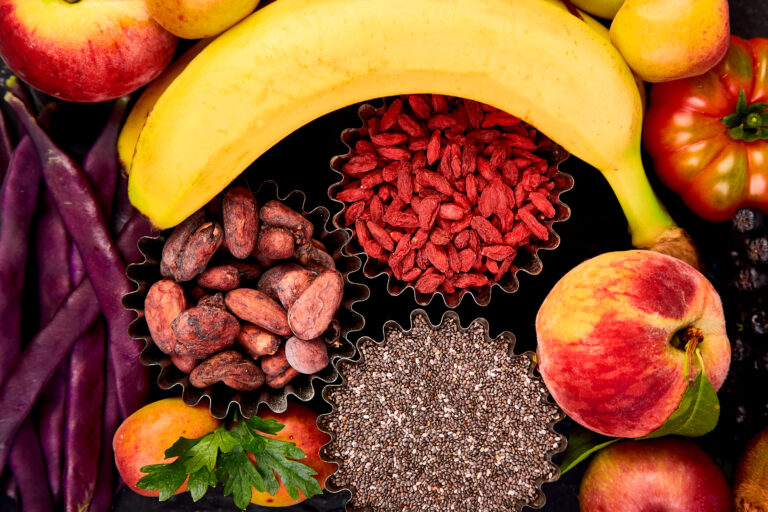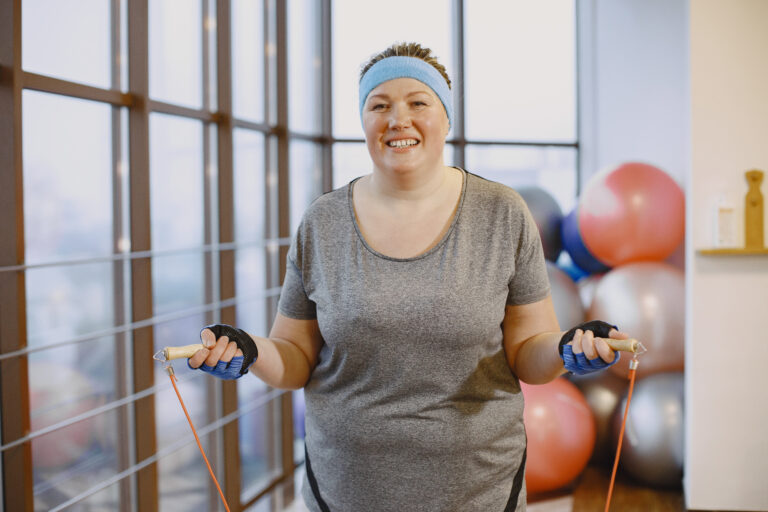Introduction
Finding the proper exercise is essential when you want to lose weight. Many women believe daily exercise workouts are the best way to reach their fitness goals. Finding the best cardio for weight loss women can be challenging because of many options. This guide will make this process easier by showing you the best and most fun cardio movements for women who want to lose weight.
Understanding Cardio for Weight Loss
Cardio, or “cardiovascular exercise,” is any action that makes your heart beat faster and your breathing deeper for a long time. For several reasons, this kind of exercise is an essential part of any weight loss plan:
Increased Calorie Burn:
Cardio workouts are great for burning calories, a crucial part of losing weight. The harder you work out, the more calories you burn.
Improved Cardiovascular Health:
Regular cardio workouts are good for your heart and lower your risk of heart disease and stroke.
Enhanced Metabolic Rate:
While you’re at rest, cardio can help speed up your metabolism, which means your body burns calories faster.
Boosted Mood and Energy Levels:
In addition to being good for your body, cardio workouts release endorphins, hormones that help improve your mood and energy.
Better Sleep:
Regular exercise workouts can help you sleep better, which is essential for keeping a healthy weight.
The Best Cardio Workouts Tailored for Women
Low Impact, High Returns
Women, particularly those new to fitness or with joint concerns, can benefit from low-impact cardio. They could do brisk strolling, swimming with low resistance, or rowing in peace. Despite lower effort, the body composition and health effects are significant.
High-Intensity Interval Training (HIIT)
HIIT has swept the fitness world for good reason. This method mixes high-intensity bursts with brief recuperation periods. HIIT burns fat post-workout through the afterburn effect and is time-efficient.
Dance Your Pounds Away
What could be more accessible than dancing your heart out? Aerobic dance courses are enjoyable and a great aerobic workout that leaves you sweating and satisfied. Zumba, anyone?
Cyclone of Calories
Cycling on the road or in a spin class is a great cardio activity for women. It strengthens legs and glutes, improves endurance, and can open the mind.
A Sprint to the Leaner You
Why are run and jog classics? They are one of the best calorie burners, fit any schedule, and are euphoric little equipment. A runner’s high—euphoria after running—is another benefit.
Crafting Your Cardio Regimen: More Art Than Math
Designing a cardiac workout is like writing a symphony. A workout that matches your body’s goals and capacities involves a delicate balance of activities, time, and intensity.
Setting S.M.A.R.T. Goals
Your exercise routine needs to help you reach your weight loss goals. Specific, Measurable, Achievable, Relevant, and Time-Bound goals will help you stay focused and plan your workout.
A Canvas of Variety
Monotony can sedate progress. Different aerobic workouts work on other muscle areas and keep the workout interesting. Set a weekly routine with high-intensity and endurance workouts.
Unearthing Motivation Goldmines
Like those last few pounds, motivation is hard to find. Reassessing your why and enjoying the activity is critical to long-term commitment. Let your motivator—endorphins, a soundtrack, or a workout buddy—drive you ahead.
The Science of Cardio and Weight Loss: Proven Tactics
Effective exercise involves more than just a workout; it involves a complete change in lifestyle that helps you lose weight.
Power Couple: Cardio and Strength Training
Strength training increases muscle and basal metabolic rate, while cardio burns immediate calories. This combo burns fat during and after the workout.
Nutrition: The Silent Workout Partner
As the saying goes, “You are what you eat.” Getting the proper nutrition at the appropriate time might boost cardiac exercises. Consider it fuel for a long drive.
The Restorative Aura of Rest and Recovery
Pushing your limits is good; overstepping them is terrible. Depriving your body of rest after an exercise can lead to overtraining and injury, obstacles to weight loss.
Cardio and Hormonal Health: The Unseen Connection
Cardiovascular activity affects weight, mood, and hormone balance. Regular cardio can balance hormones needed for health.
Stress Hormones:
Your body’s stress hormones, like cortisol, can drop when you do cardio exercises like running, cycling, or swimming. Less cortisol can help you sleep better, feel better, and protect your immune system.
Endorphins:
Endorphins are the body’s natural painkillers and mood boosters. They are created when you do cardio. People who do this can feel happy and euphoric, which is why it’s sometimes called the “runner’s high.”
Insulin:
Regular exercise can help your body respond better to insulin, a hormone that controls how much sugar is in your blood. People with insulin resistance or type 2 diabetes may benefit the most from this.
Sex Hormones:
Cardio also affects estrogen and testosterone. Regular exercise balances these hormones, improving libido, mood, and body composition.
Growth Hormone:
Human growth hormone (HGH) is essential for metabolism and cell repair, and cardio can make it appear more. Getting more HGH can help you lose fat and build muscle.
Finally, doing cardio regularly can make a massive difference in hormone health. This is another strong reason to wear sneakers and hit the track.
Post-Workout Recovery: The Debriefing Session For Your Body
Fitness requires post-workout recovery as much as exertion. After an exercise, your body repairs and rebuilds. Adequate recuperation improves performance, reduces injuries, and allows for more intense training.
Hydration:
It’s essential to replenish your body’s water supply after a workout. When you work out, you sweat and lose fluids. Getting these fluids back into the body helps you heal and keep it working at its best.
Nutrition:
Eating a healthy mix of proteins and carbs within 45 minutes of working out can significantly speed up the body’s recovery process. Carbohydrates give you energy, and proteins help your muscles heal.
Stretching:
After a workout, a full-body stretch exercise can help loosen muscles, make you more flexible, and delay the start of muscle soreness.
Rest:
Getting enough sleep is the best thing you can do to help your body heal. Deep muscle repair and growth happen in the body while we sleep.
Active Recovery:
On days when you’re supposed to rest, light, low-intensity activities like yoga or a slow walk can help your healing by getting blood and nutrients to sore muscles.
Letting your body recover after a workout is just as important as the exercise itself. It’s a necessary process that sets the stage for your body to adapt and improve.
Understanding Body Types and Cardio Needs
Each person has a somatotype, which affects how they respond to cardiac activities. The three main body kinds are Endomorph, Mesomorph, and Ectomorph.
Endomorphs have more fat and bone. They may struggle to reduce weight compared to others. Cardio can help endomorphs lose weight and enhance their health. High-intensity interval training (HIIT) can burn many calories quickly.
Mesomorphs are inherently muscular and can readily gain or lose weight. They are suitable for steady-state cardio, interval training, and sport-specific workouts like soccer or basketball, which combine strength, agility, and endurance.
Ectomorphs are slim, fast metabolizers with low body fat. Ectomorphs must balance cardio to maintain lean muscular mass. Cycling, brisk walking, and swimming are excellent aerobic exercises without causing weight reduction.
Recognizing your body type can help you create a cardio plan that fits your physique, weight loss objectives, and health concerns. Consult a fitness specialist to understand your body type and build a personalized cardio program.
Cardio and Age: A Lifelong Fitness Ally
Age is an important factor to consider when planning a cardio program because people at different stages of life have different health needs and physical abilities.
Young Adults:
Cardio helps young individuals in their 20s and 30s stay healthy and prevent lifestyle problems. For the best results, combine high-intensity exercises like running, cycling, or boot camps.
Middle-aged Adults:
Regular cardio helps 40- and 50-year-olds retain lean muscle mass, control weight gain, and improve heart health. Moderate-intensity exercises like brisk walking or swimming and occasional high-intensity workouts can work.
Seniors:
Cardiovascular health becomes more critical for people in their 60s and beyond. Walking, cycling, and water aerobics are low-impact cardio activities that improve heart health, mobility, and lifespan without straining joints.
Cardio boosts health, vigor, and well-being throughout life. However, you must listen to your body and alter your exercise routine. You can start reaping the benefits of cardiovascular fitness at any time.
Addressing Common Concerns
When starting a cardio exercise program, questions and concerns will likely arise. It’s time to talk about some popular ones:
I need more time for cardio.
People often don’t have much time, but remember that even small bursts of cardio can be perfect for your health. You can fit cardio into a busy plan by doing high-intensity interval training (HIIT), walking quickly during breaks, or riding a bike to work.
Cardio is too tiring.
For those new to exercise, it’s normal to find it hard on your body. The important thing is to start slowly and build up your fitness level by gradually increasing the volume and length of your workouts. When you first begin, remember that regularity is more important than intensity.
I have a medical condition.
Talking to your doctor before starting a new workout plan is very important if you already have a health problem. These professionals can help you determine what kinds of exercise and how intense they should be for you.
I’m not losing weight.
Weight loss is complicated by nutrition, sleep, stress, and genetics. Cardio can help with weight loss, but reasonable expectations and focusing on health rather than weight are critical.
Cardio is boring.
Dance, cycling, kickboxing, and trail running are great aerobic activities. If standard cardio routines bore you, try other activities until you find one you like. Remember that sticking to a workout routine is ideal.
Conclusion
In conclusion, cardio is essential for weight loss, disease prevention, and well-being. Women looking for the ‘best cardio for weight loss’ must match their workouts to their body type, age, and fitness level. The variety of aerobic workouts offers something for everyone, regardless of preference.
The ideal cardio workout you enjoy and can stick to, whether it’s HIIT, swimming, or biking. Consult a fitness professional or doctor to design a safe and effective cardio plan. Losing weight is a marathon, not a sprint. Your weight loss goals are achievable with patience, persistence, and the correct cardio.











